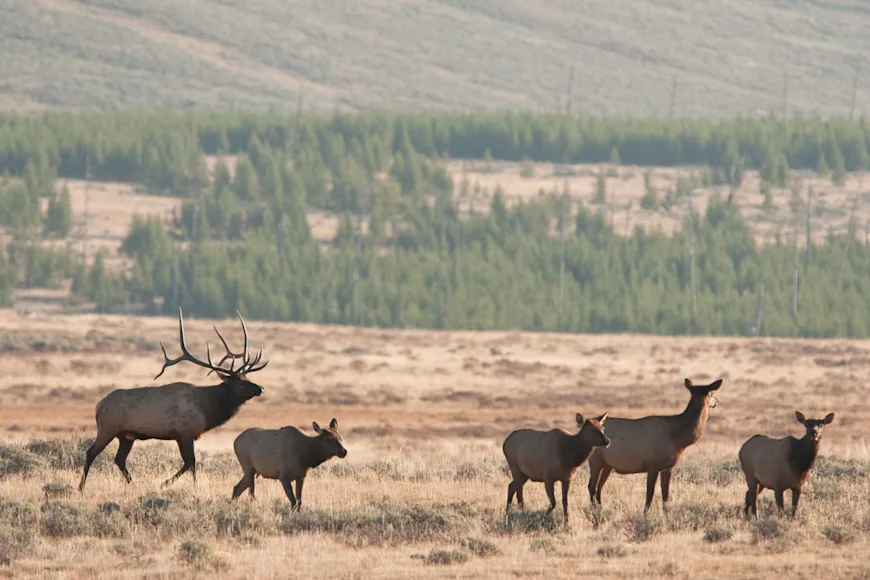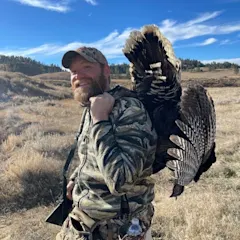Idaho could be on the cusp of banning drones, thermal optics, night vision, and other high-tech gadgets that are creeping into the hunting industry. That's if the state's fish and game agency takes the advice of a 23-member working group made up of local hunters who want tighter restrictions on new and emerging tech.
IDFG began forming the Hunting and Advanced Technology (HAT) working group in August 2024. The purpose of the group is to "assess public perspective on what technology is—or is not—considered 'fair chase' in the pursuit of game," the agency stated in a 2024 press release. During a March Commission meeting, IDFG directed agency staffers to apply the group's final recommendations to upcoming rule-making procedures. The public will then be asked for its feedback on the proposed rule changes.
In a press release issued on April 14, IDFG said the HAT group supports new rules or increased attention to a slew of technological advancements that include drones, smart optics, muzzleloader technology, artificial intelligence, night vision, thermal imaging, and transmitting (or cellular trail) cameras.
Drones, Smart Optics, and AI
When it comes to using drones for hunting, the group voted unanimously to support a ban on the remote-controlled crafts for 6 months of the year. In a statement shared by IDFG, HAT said it should "be unlawful for any person to use any aircraft (including drones, helicopter, and fixed-wing aircraft) to spot, locate, or aid in the taking of any big game ungulates' from July 1 through December 31, or dates as determined most appropriate by the Commission." Notably absent from the group's position, though, was any mention of tracking or retrieving downed or injured game with a drone.
The HAT group asked IDFG to keep current regulations around so-called "smart optics." The term usually refers to a type of rifle scope with built-in electronics like smart phone-connecting bluetooth and laser range finders, which far exceed the capabilities of traditional analog scopes. Currently, IDGF prohibits all smart optics that are "attached to or incorporated into a firearm."
The group went on to warn about the potential use of artificial intelligence in hunting, though it stopped short of recommending specific restrictions on AI. "HAT strongly advises the Commission to closely monitor the rapidly evolving application of AI within the hunting community," the group wrote. "As AI technologies continue to advance, new tools and techniques may emerge that could significantly impact hunting ethics and principles. Maintaining a vigilant and adaptable approach will be critical to preserving Idaho’s hunting traditions and ensuring alignment with wildlife management goals."
Cell Cams, Thermal Imaging, and Night Vision
Other recommendations included bans of varying degrees for three other categories of electronic hunting gear: cellular trail cams, thermal imaging optics, and night vision. But those recommendations fell one vote shy of reaching 100 percent consensus within the 23-member group, IDFG reports.
Thermal optics detect body heat and use radiation to render an image of an animal while night vision devices amplify lightwaves that are otherwise invisible to the human eye. Both technologies should be illegal "for scouting, hunting, and retrieving big game ungulates," the HAT group said.
When it comes to cellular, or what IDFG calls "transmitting trail cameras," the HAT group would limit its ban to public lands or "public access properties." Other states have already adopted restrictions on cellular trails cameras. In Montana and Alaska, for instance, hunters are barred from using them during big game hunting seasons. But cell cams remain widely popular in many state across the country.
The concept of "fair chase"—cited by IDFG as the guiding principle of the HAT working group—dates back to Theodore Roosevelt and his 1887 formation of the Boone & Crockett Club, which remains one of the world's foremost authorities on hunting ethics to this day. B&C defines fair chase as "the ethical, sportsmanlike, and lawful pursuit of a free-ranging wild game animal, in a manner that does not give the hunter an improper or unfair advantage."
The Club first took a stance on drones in hunting back in 2014. "These highly sophisticated, remote-controlled aircraft have no place in fair-chase hunting," said B&C's VP of Big Game Records Richard Hale, at the time. "The Boone and Crockett Club stands with state wildlife agencies, the Pope and Young Club and hunter-conservationists everywhere who are discouraging the use of drones in hunting."
Read Next: Father-Son Taxidermy Business Linked to Large-Scale Idaho Poaching Case
According to the Club's most up-to-date official policies, trophy animals taken with the use of drones are not eligible for entry into the B&C record books. B&C also bars entry for game animals taken with night vision, thermal imaging optics, smart scopes, and trail cameras that transmit photos or videos to hunters "in real time."


